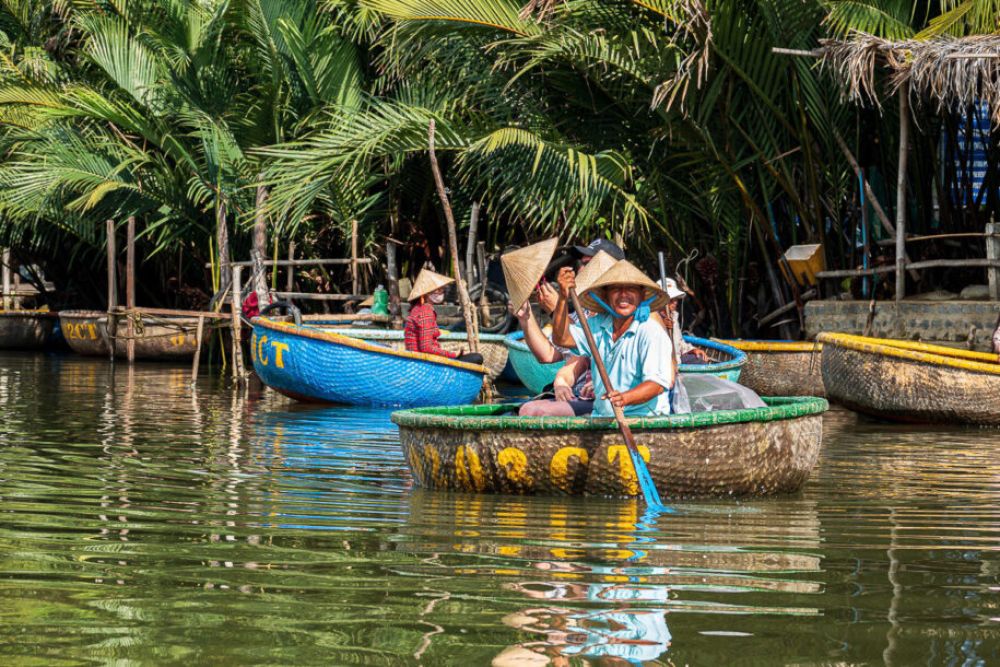

The picturesque town of Hoi An has long been recognized on the world tourism map, not only for its well-preserved Ancient Town but also for the serene beauty of the nearby Cam Thanh Coconut Village. Situated just a few kilometers from the bustling historical center, the Cam Thanh Coconut Village, known locally as the Bảy Mẫu coconut forest, is nestled in the delta region where the Thu Bon River meets the East Sea.
The roots of tourism in Cam Thanh can be traced back to the early 2000s. Initially, this area was not recognized as a significant tourist destination but rather it was famous amongst locals for its agriculture and particularly for its large coconut palm forest. As tourism in Hoi An grew, travelers became more interested in the traditional lifestyles and natural landscapes surrounding the ancient town.
It wasn’t until the late 2000s and early 2010s that Cam Thanh started to emerge as a tourist destination. Visitors were drawn to the area's tranquil waterways and the opportunity to experience rural life in Vietnam. The community saw the potential for eco-tourism and started developing tours and activities that highlighted their unique environment and culture.
Today, the village is renowned for its sustainable tourism practices and authentic cultural experiences. Tourists can paddle through the serene waterways in traditional bamboo basket boats known as Thung Chai while local guides explain the ecology of the mangrove forests and demonstrate traditional fishing techniques. Visiting the Cam Thanh Coconut Village has become a staple experience for those staying in Hoi An.
Cam Thanh Coconut Village has adapted to global tourism trends, focusing on providing visitors with immersive cultural exchanges and eco-friendly activities. As of the latest trends, there has been an increased emphasis on community-led and experiential travel where tourists are seeking deeper connections with the places they visit.
In response to the growing concern for responsible travel, Cam Thanh has embraced a tourism model that prioritizes low-impact activities, preservation of the mangrove ecosystem, and support for local livelihoods. The village offers a range of experiences from cycling tours, cooking classes, to craft workshops where tourists can learn to make traditional Vietnamese crafts from coconut materials.
In conclusion, the tourism history at Cam Thanh Coconut Village is one of growth and adaptation, evolving into a site that not only beckons travelers with its natural charm but also its strong commitment to sustainable tourism practices. The village sets an example for destinations worldwide on how to harmoniously blend tourism with ecological and cultural preservation.